

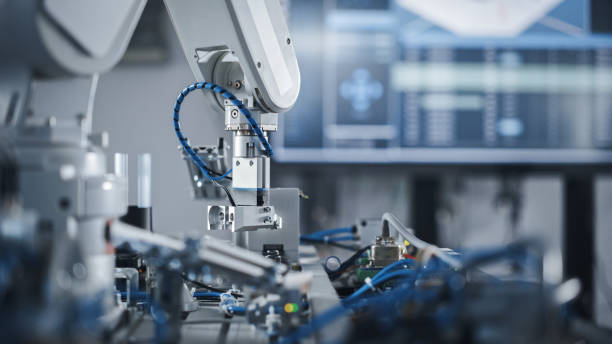
Did you know that choosing the right industrial machine could double your productivity overnight? It's not just a matter of efficiency—it could mean the difference between profit and loss. You've never read an industrial guide quite like this!
In a world rapidly shifting towards automation, selecting the perfect industrial machine has become crucial. Companies are racing to integrate advanced technology, and the stakes have never been higher. Missing out could be your biggest business mistake.
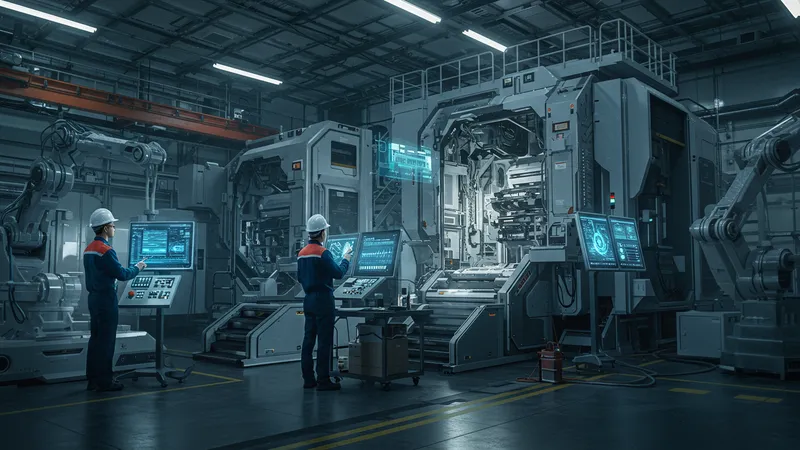
Most businesses don't realize how much they’re overspending on inappropriate machinery. The truth is, not all machines are created equal, and some could be secretly siphoning money from your budget. But that’s not even the wildest part…
Some machines appear affordable but have hidden costs that can cripple a business. These "bargains" can lead to skyrocketing energy bills, excessive maintenance, and lower operational longevity. But that’s not even the wildest part…
The tools you choose impact everything—from efficiency and speed to safety and sustainability. The wrong machine can derail projects, leading to catastrophic failures. What happens next shocked even the experts…
Investing in less expensive industrial machines might seem like a smart move initially, but it often results in unforeseen expenses. Maintenance and part replacements can escalate costs beyond expectations. Companies enticed by attractive price tags overlook the extended warranty fees, frequent repairs, and diminished productivity caused by machine downtime. Cheaper up front often means dearer in the long-term. The next revelation might change your perspective entirely...

Consider the true operating costs of the cheaper machine models—energy consumption, frequent service interruptions, and increased staff training for repairs are just the beginning. Companies end up spending more time troubleshooting and less time producing, leading to delayed delivery schedules and customer dissatisfaction. But there’s one more twist...
The durability question of cheaper machines is always concerning. These machines often fall short in terms of longevity. They may lack the resilience to endure intensive use, breaking down faster and more frequently. The initial savings quickly evaporate when businesses have to replace equipment sooner than intended. However, an even bigger pitfall lies ahead...
Unreliable industrial machines compromise safety standards. Subpar equipment may lack proper safety features, posing risks to workers. Increased accidents and downtimes can severely affect employee morale and, consequently, overall productivity. Now, imagine the hidden consequences... come next for more insights.
High-quality industrial machines, while having a hefty upfront cost, offer long-term savings that outweigh the initial investment. They are designed for efficiency, with advanced features that minimize downtime and maintenance interruptions. The superior construction materials contribute to enhanced durability which translates to a lower total cost of ownership over the machine’s life span. The investment here pays off in ways bargain hunters often miss. But hold on—there’s more to this story.
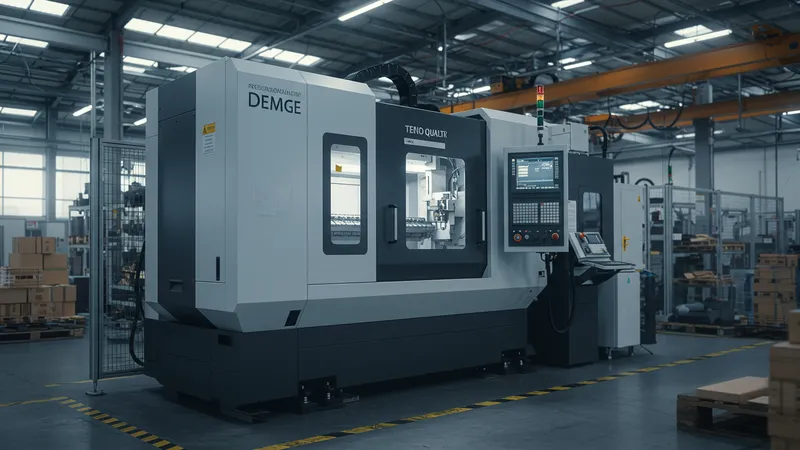
Beyond cost durability, premium machines optimize productivity in critical ways. Advanced automation reduces human error, potentially cutting manual labor needs by a significant margin. Time saved on operations directly boosts the production throughput, while reliability reduces stress on the workforce, leading to more consistent results. In embracing such machines, firms find more than a time saver—it becomes an advantage-giving asset. There's an even deeper insight to be unveiled...
Environmental benefits also come into play when choosing premium machinery. Many top-tier industrial machines are built with sustainability in mind, utilizing cutting-edge technology that reduces energy consumption and emissions. This not only aids in compliance with environmental legislation—often leading to cost savings on potential fines—but also aligns with corporate social responsibility goals. A hidden feature underlines their appeal further...
Finally, premium machines often come equipped with superior safety features. Incorporating the latest in technology concerning operator safety, these units can drastically reduce workplace incidents and potentially fatal accidents. The significance of these features transcends dollars—it fosters a secure work environment and strengthens workforce morale. What follows will challenge popular assumptions as we delve even deeper.
In the industrial world, speed and accuracy are often seen as divergent goals. Fast machines promise quick turnarounds, but at what cost to quality? Conversely, machines designed for precision may slow down operations. However, industry leaders have found a harmonious balance between the two, leveraging speed without sacrificing accuracy. This combination is vital for industries striving to meet high standards and demands. Yet, there’s a new development that disrupts the norm...
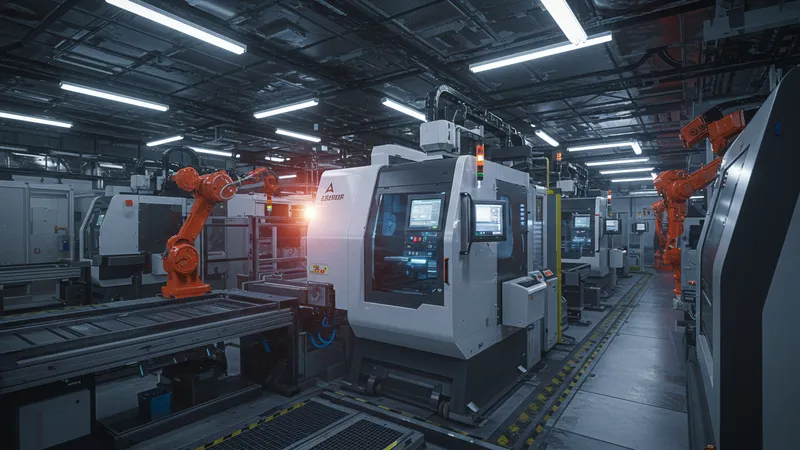
Technological advancements are constantly producing machines capable of high-speed operations without a hitch in accuracy. Such progress challenges the long-held belief that you must choose between one or the other. Ultra-modern sensors and processing units facilitate real-time adjustments during operations, significantly improving both the speed and output quality. But, what's the catch you ask?
The strategic deployment of hybrid machinery is on the rise. These machines adapt to varying workloads, optimizing the balance of speed and accuracy like never before. This adaptability is not just theoretical—a slew of companies have already doubled their production efficiency after embracing such technology. The shift reshapes conventional manufacturing wisdom completely. Yet, another layer of innovation exists that you might not expect...
Integrated AI-driven analytics within these machines provide insights to further refine processes. By leveraging data, these machines self-optimize, paving an unprecedented path to achieving both maximum speed and peak precision. Machines continually learn from operations, ushering in a new era of smart manufacturing. But that’s just the beginning of this technological revolution...
The paradigm of industrial machine maintenance is riddled with misconceptions. Popular belief has many businesses clinging to outdated practices that are not only inefficient but also potentially damaging. Embracing new maintenance methodologies could drastically increase a machine's lifespan and effectiveness. Sifting through the noise to understand what truly matters can be challenging. Yet, what about the misunderstood opportunities hiding in plain sight?
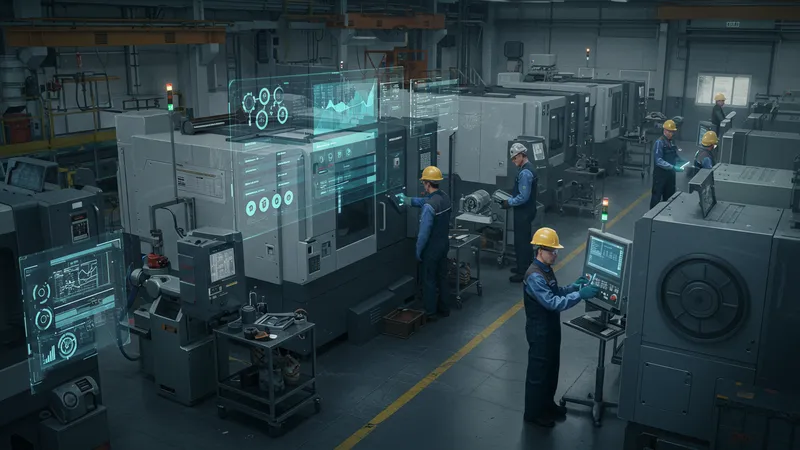
Preventive maintenance is often underrated, yet it holds the key to unlocking optimal machine performance. Regular checks and timely interventions can preempt major breakdowns, saving substantial time and cost in the long run. When businesses switch focus from reactive to proactive maintenance strategies, they often experience a dramatic improvement in machine reliability. But how deep does this issue really go?
Digitization and the growth of IoT have brought a transformation to maintenance concepts. Machines equipped with IoT sensors can forecast issues before they arise, ushering in a predictive maintenance approach. This technology alerts operators to potential problems, empowering them to resolve issues proactively, thereby reducing unexpected downtimes significantly. This leads to an underappreciated opportunity that we need to explore...
Despite the proven benefits, a surprising number of businesses hesitate to adopt these modern maintenance practices. Misconceptions about complexity, cost, and applicability deter them. However, as more companies report significant ROI boosts by adopting predictive maintenance, the industry’s next evolution becomes increasingly clear. What we uncover next might redefine maintenance culture forever...
Introducing robotics into industrial machinery has reshaped automated processing lines, boosting production rates yet simultaneously reducing errors. This robotic transformation is visible across various sectors, enabling complex tasks to be completed with newfound simplicity and precision. The combination of traditional machines with robotic assistance not only enhances productivity but also sets new operational standards. Yet many aren't aware of the full revolution this entails...

Robots excel in performing repetitive, mundane tasks with unwavering accuracy, leaving human workers available for more complex jobs that require a strategic mindset and problem-solving skills. This co-working relationship elevates overall workflow efficiency and enables quick adaptation to production demands. The question that arises is, how do these systems tackle intricate operations where precision is crucial?
Collaborative robots, or cobots, are designed to work alongside human workers, handling tasks that require both human oversight and repetitive robotic precision. Their integration reduces labor costs, minimizes fatigue-related errors, and boosts safety within the workplace. Cobots democratize advanced automation, offering solutions affordable for even small to mid-sized companies. But how else can robotics integrate further into everyday machining?
As AI technology evolves, robots are becoming more intelligent, understanding and reacting to environmental changes. This leap in AI integration paves the way for a more autonomous future, where machines think independently, optimize routes of operation, and adjust to unforeseen circumstances seamlessly. With every iteration, robotics transcend from mere components to essential partners in innovation. Our next discovery might just be pivotal in this transformation...
In the industrial realm, one-size-fits-all is a relic of the past. Companies are increasingly opting for custom solutions that cater to their specific operational needs. Customized machines offer pinpoint precision, optimized performance, and sustainable production cycles, elevating an industry where every second counts. But this customization trend is far from a luxury; it’s a strategic imperative. Are you ready for even deeper insights?
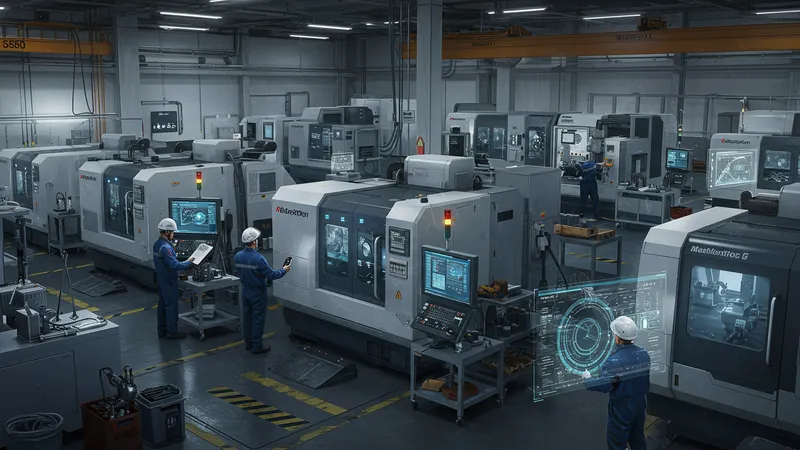
Custom machines are engineered to exact specifications, fully equipped to handle varied manufacturing requirements. By aligning machine capabilities with business objectives, these bespoke solutions facilitate maximum efficiency and adaptable production workflows. The tailored approach addresses both simple and complex processes, promising unparalleled performance. But, the advantages continue to extend further than you'd expect...
Despite the apparent benefits, the transition to fully customized machinery can be daunting. It demands minor downtime and strategic investment, but the resulting productivity leap is undeniable. Companies that invest in tailored machines report increased competitive advantage and significant market presence. But how can businesses overcome the challenges of adopting this critical approach?
The integration of advanced configuration technology allows for seamless customization. With computer-aided design (CAD) and manufacturing (CAM) software, businesses can design, test, and implement new machine configurations before physical production even begins. This method reduces risk while accelerating development, setting new standards for industrial adaptability. Our progress doesn’t cease here, as even more innovative customization techniques await discovery...
The adoption of green machines is revolutionizing the industrial sector, aligning sustainability with profitability. Modern industrial machines are increasingly designed to reduce environmental footprints, cut emissions, and use resources more efficiently. Companies recognizing environmental responsibility as tantamount to innovational growth are experiencing unprecedented success. The real environmental impact might surprise you...
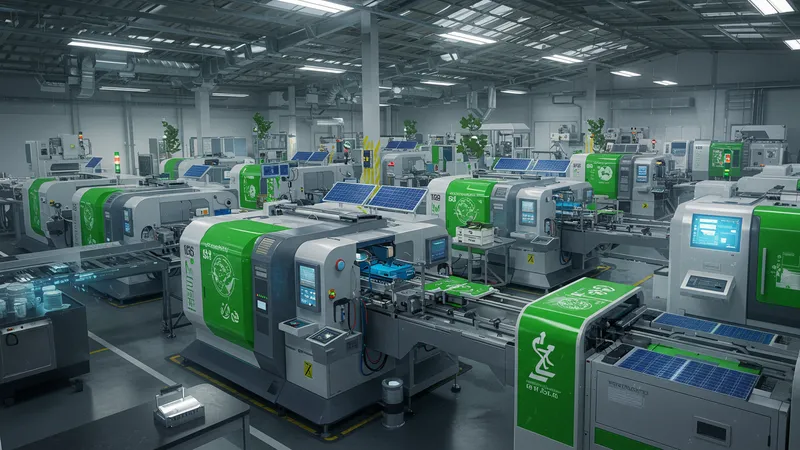
Sustainability efforts go beyond using eco-friendly materials; they extend to improving energy efficiency and reducing waste production. Through smarter designs and sustainable practices, such as recycling by-products and optimizing resource usage, these machines aid in achieving zero-waste goals. But how do these machines impress even further in tackling environmental challenges?
The impact of government regulations on industrial evolution cannot be understated. Compliance with environmental standards is driving innovation, pushing manufacturers to develop machines that not only meet but exceed these standards. This regulatory landscape fosters innovation and leads to increased investments in cleaner technologies, incentivizing a sustainable industrial future. But how do manufacturers balance cost with environmental gains?
As consumers become more environmentally conscious, companies integrating eco-conscious machines not only meet regulations but also gain consumer favoritism. The market shift towards favoring sustainable brands brings tangible business advantages, expanding brand loyalty and market reach. With this evolution, industrial sustainability marries profitability in ways never seen before. What follows next will delve deeper into this transformative journey...
Digital twins—virtual replicas of physical machines—are transforming machine management. These advanced digital models enable detailed simulations and real-time monitoring, predicting potential failures and optimizing performance without risky trial and error. This technology ushers in a new era of efficiency and innovation, cutting maintenance costs and extending machinery life. But what else can digital twins offer beyond their initial utility?
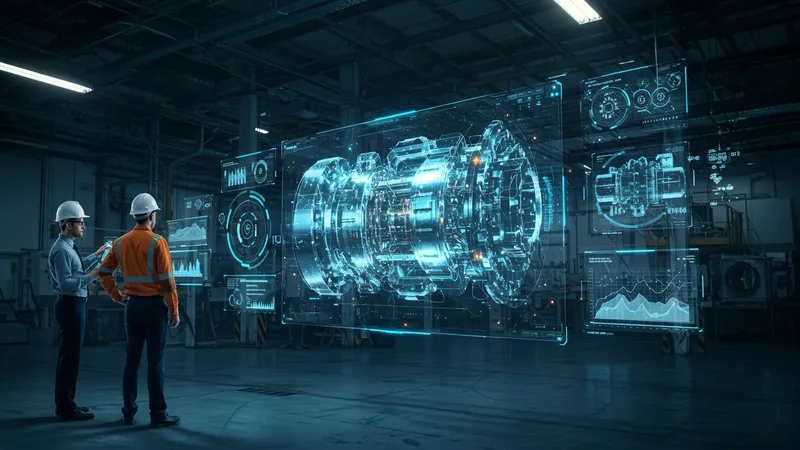
The integration of digital twins into industrial settings has created a data-driven environment where decisions are informed by real-time analytics. These digital models iterate with continuous data input, providing actionable insights and uncovering hidden improvements. From predictive maintenance to operational optimization, the impact of digital twins is profound. But there’s a further dimension that elevates them beyond standard practice...
Digital twins also enhance collaborative engineering. Teams can simulate various scenarios within the digital realm to test outcomes before implementing them in the physical world. This not only accelerates innovation but also minimizes the risks associated with operational changes. Rapid prototyping and virtual experimentation speed up development cycles significantly, unleashing a cascade of innovative potentials. Yet, the future expansion of digital twins promises even more capabilities...
As the technology matures, the use of digital twins expands into broader applications, from supply chain management to factory simulations. Integrated with AI and machine learning, they continuously evolve, developing smarter strategies for industrial growth. Embracing digital twins today means staying ahead of the technological curve tomorrow. As this section leads to another focal discovery, prepare to dive deeper into groundbreaking revelations.
While machinery becomes increasingly automated and sophisticated, the human factor remains indispensable in industrial operations. As machines automate tasks, the need for skilled technicians to manage, oversee, and innovate has never been greater. Upskilling becomes essential to maximize the interplay between human expertise and machine capabilities. The next generation of industrial talent might have you reimagining workforce dynamics...
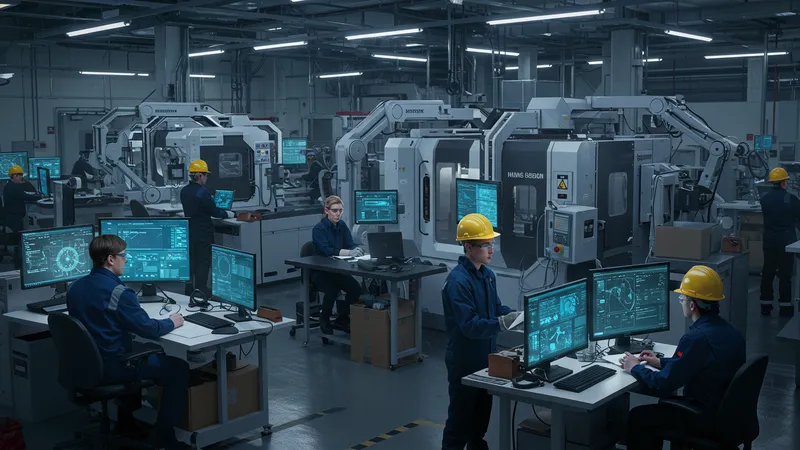
Training programs tailored to enhance technical prowess and machine fluency are crucial in realizing the full potential of industrial machines. These programs equip workers with the know-how to manage complex systems, troubleshoot effectively, and innovate continuously. By bridging the skills gap, industries ensure that technological advancements do not outpace human capabilities. But the transformation in workforce development has further ramifications...
The evolution of advanced learning platforms, including augmented and virtual reality, allows employees to gain hands-on experience in a risk-free environment. Simulation-based training turns learning into a dynamic, engaging process that enhances retention and speeds up mastery. Additionally, this technology enables remote learning, fostering a diverse and flexible workforce ready for any operational challenge. However, learning innovations go one step further...
By encouraging cross-disciplinary skills and fostering a culture of continuous learning, businesses can cultivate innovative thinkers ready to tackle the challenges of tomorrow. These forward-thinking strategies encourage creative solutions and foster an environment where technology and human insight thrive in perfect harmony. As we uncover what's next, be prepared to challenge conventional thinking and celebrate the rise of the human element in technological progress.
The landscape of industrial safety has radically changed. What was once a compliance-driven obligation is now a proactive strategy integrating safety into every aspect of machine design and operation. New innovations go beyond regulatory requirements, embedding safety deeply and making it a core principle of machine functionality and employee welfare. The safety revolution might catch you off guard...
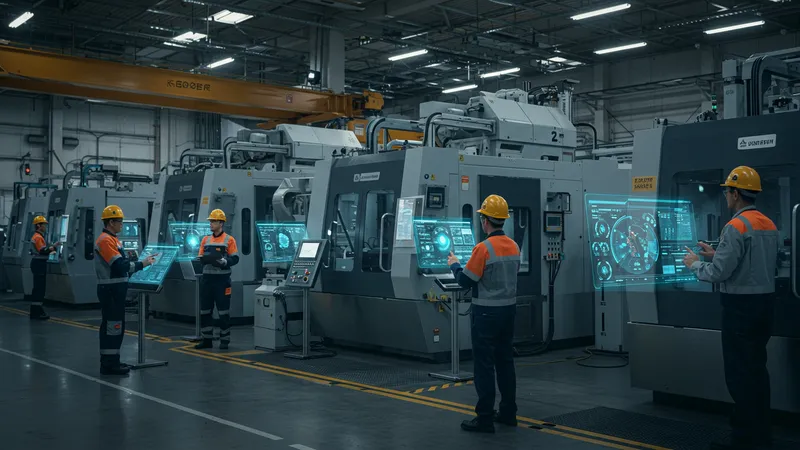
Advanced sensors and real-time monitoring systems have raised the bar for safety standards, alerting operators of anomalies instantly. These technologies prevent accidents before they occur and create a safer work environment by minimizing human error. The transition from mere compliance to preemptive safety culture requires insight and investment but demonstrates substantial benefits. But what new safety measures are shaking up practices even further?
Automated shutdown protocols are becoming standard as machines grow smarter. Instances of equipment wear or potential hazards trigger these protocols, preventing damage before it culminates into a critical incident. Such automation assures regulatory compliance and instills confidence in operations, preserving both lives and equipment. The continuous development of safety-friendly technology heralds an era where workplace hazards are increasingly obsolete. What transformations lie ahead as we further invest in protective solutions?
The push towards a holistic safety culture is reshaping the industry standards. Businesses committed to safety innovation outperform competitors by not only reducing costs associated with accidents but also fostering an engaged and motivated workforce. Safety-centric companies enjoy enhanced reputation and attract top talent, leading to a thriving operational climate. What you uncover next could be the key to unlocking safe and productive working environments for the future...
The dawn of next-generation industrial machinery hints at untapped potential and futuristic possibilities. Rapid developments in AI, IoT, and advanced robotics forecast a future where machines are not merely tools but intelligent entities capable of transforming industries. Companies poised to capitalize on these technologies are set to unleash unprecedented growth and efficiency. The predictive insights on the horizon are extraordinary...

Artificial intelligence is the linchpin of this progress, bringing automation to levels once considered science fiction. Machines will predict needs, self-optimize tasks, and even autonomously maintain themselves. As AI becomes more sophisticated, it opens avenues for leaner, meaner, and greener production processes. But how these developments integrate with existing technologies raises a thrilling prospect...
The fusion of industrial IoT networks with state-of-the-art robotics promises an interconnected fabric of operational excellence. Enhanced communication and real-time adaptability will revolutionize how factories operate, punctuating the fourth industrial revolution. Intelligent machines will not only learn from the data but actively contribute to decision-making processes. As this synergy grows, the face of industrial machinery will fundamentally change. What could these advancements precipitate in an ever-accelerating tech landscape?
The road ahead points towards machines that excel beyond current capabilities, encompassing smart grid technologies, energy-saving innovations, and green manufacturing. Such strides offer a competitive edge to pioneering companies, turning speculative visions into tangible realities. In embracing these breakthroughs, the industrial sector positions itself as the bedrock of future socioeconomic development. As we delve deeper, the panorama of tomorrow unveils in revelatory detail...
Successful adaptation to industrial transformations centers around strategic change management. Understanding the ways to integrate new technologies and proactive adaptation of business models become vital in carving a niche in the evolving market landscape. Leadership focused on dynamic growth and innovation prepares organizations for impending changes. This management revolution might just challenge conventional paradigms...
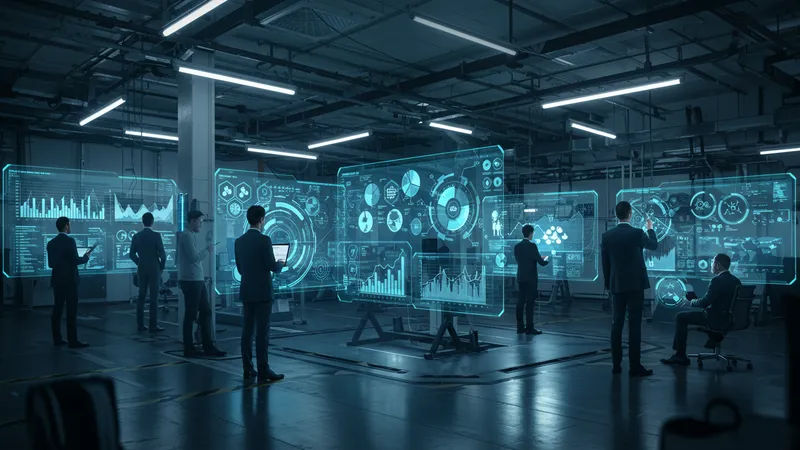
Embracing agile methodologies offers the flexibility needed to manage ongoing changes and capitalize on opportunities. It allows companies to respond to market demands swiftly, iterate processes, and optimize operations in real-time. Agile practices empower organizations to innovate continuously, nurturing an environment that thrives on adaptability. As innovation takes precedence, the complexity of managing change reveals additional layers...
A culture of operational excellence predicates success in this turbulent industrial climate. Building resilience by investing in continuous training, cross-disciplinary teams, and technological fluency ensures firms stay ahead of the curve. Business environments that champion openness to change and technology-driven solutions facilitate competitive standing. But how do companies craft such an engaging and proactive change culture?
The synthesis of human and organizational development with emerging technologies represents a forward-thinking approach to change management. As businesses leverage AI, Big Data, and IoT to inform decision-making, they cultivate ecosystems where innovation is the norm rather than the exception. This holistic view propels companies toward visionary and informed leadership roles in industry evolution. The journey doesn’t end, as we delve deeper into the core strategies driving change management success...
The dynamic industrial landscape beckons for strategic partnerships to drive growth, share risk, and leverage complementary strengths. In an era where technological prowess dictates market leadership, synergistic collaborations provide the foundation for scaling operations and enhancing innovation. The true potential of partnerships might surprise you...

Collaborations are no longer just transactional; they form strategic alliances that address the intricacies of industrial transformations. By pooling resources, knowledge, and technological capabilities, partnerships accelerate development cycles and open new avenues for innovation. The cooperative advantage granted by such alliances transforms companies’ trajectories. Yet the scope of partnerships extends even further...
The convergence of companies possessing disparate strengths leads to the cultivation of new technologies and approaches. Innovating through collaboration aligns industry players towards common goals, creating holistic ecosystems where shared expertise amplifies collective success. Such strategic partnerships redefine the industry’s competitive map, pushing boundaries and expanding possibilities globally. But how do these relational dynamics shape the future strategy?
Partnerships act as catalysts for technological integration, driving industry standards and pushing technological limits. These alliances facilitate entry into new markets, foster diversity of thought, and enhance strategic positioning. Companies embracing this cooperative evolution redefine what’s possible, driving exponential industry growth. As we unravel deeper insights, the mantra of collaboration reshapes enterprise strategies and industry successes further...
This exploration has unveiled the multifaceted intricacies of industrial machinery, from the careful selection of quality machines to groundbreaking technological innovations poised to transform industries. As businesses adapt to relentless advancements, the lessons from industry leaders underscore one crucial aspect: the need for strategic foresight and adaptability.
Whether leveraging AI, embracing sustainability, or forming strategic alliances, the path to success demands an agile and forward-thinking mindset. These insights not only steer competitive advantage but also redefine the boundaries of industrial possibilities. Share, bookmark, and remain engaged in these conversations, as industry innovations continue to shape our world profoundly.